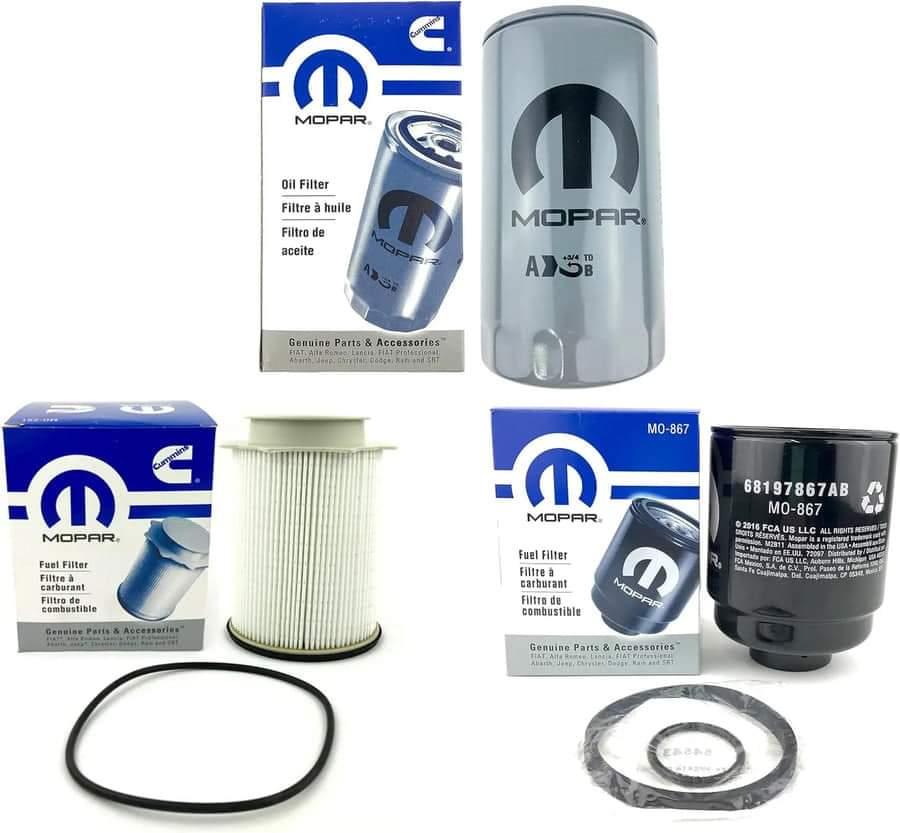When it comes to heavy-duty performance, the Ram 3500 stands tall — but even a powerful truck like this depends on small components working flawlessly. One such part is the oil filter. It quietly protects your engine from harmful debris, keeps your oil clean, and ensures long-term reliability.
If you own a Ram 3500 in the U.S., whether you’re hauling equipment across Texas or commuting through snowy Colorado, understanding your oil filter’s role and maintenance schedule can save you thousands in repairs.
Why Is the Oil Filter So Important for the Ram 3500?
The Ram 3500 oil filter keeps your engine protected by trapping dirt, carbon, and metal particles from the oil. Without it, contaminants can damage vital parts like pistons, bearings, and the turbocharger—especially in powerful 6.7L Cummins engines. Using a quality Ram 3500 oil filter ensures cleaner oil, smoother performance, and longer engine life.
Key Functions of the Oil Filter:
-
Traps impurities and keeps oil clean
-
Maintains proper oil flow to engine parts
-
Prevents sludge buildup and overheating
-
Extends the lifespan of your engine oil
According to Mopar, the OEM part number 4892339BE fits most 2025 Ram 3500 models equipped with the Cummins diesel engine.
How Often Should You Replace the Ram 3500 Oil Filter?
Your oil filter should be replaced at every oil change. For most Ram 3500 trucks:
-
Standard use: Every 7,500 miles or 6 months
-
Heavy towing or dusty conditions: Every 5,000 miles
-
Extreme duty (construction, long-haul, etc.): Inspect every 3,000–5,000 miles
The Ram owner’s manual notes that diesel trucks experience faster oil contamination due to soot and high heat — making regular filter replacement essential.
What Type of Oil Filter Does the Ram 3500 Use?
Ram 3500 models typically run on either a Cummins diesel or gasoline HEMI engine, and both require filters built for high oil pressure and extended drain intervals.
Recommended Options:
-
Mopar OEM 4892339BE: Factory filter with excellent filtration and flow balance.
-
Fleetguard LF16035: Trusted aftermarket option designed for the 6.7 L Cummins.
-
WIX 57314 or Baldwin B5068: Heavy-duty alternatives for high-performance applications.
When choosing, always check compatibility with your truck’s year and engine code. OEM filters guarantee the right fit and performance consistency.
How to Replace the Oil Filter on a Ram 3500
Changing your oil filter at home is straightforward if you follow the right steps.
Step-by-Step Guide:
-
Warm up the engine for a few minutes to loosen debris.
-
Turn off the truck and let it cool slightly.
-
Drain old oil using a catch pan. Remove the oil drain plug carefully.
-
Remove the old filter. Make sure the old gasket comes off with it.
-
Lubricate the new gasket with a light coat of fresh engine oil.
-
Install the new filter hand-tight, then turn an additional ¾ rotation.
-
Refill oil with the recommended grade (e.g., 15W-40 for diesel).
-
Start the engine, check for leaks, and verify oil pressure.
Pro tip: Always reset your oil life monitor from the dashboard after completing the service.
What Are the Benefits of Using a High-Quality Oil Filter?
A high-grade oil filter does more than just clean oil — it protects your investment.
Benefits Include:
-
Better engine protection: Reduces metal wear and bearing damage
-
Longer oil life: Keeps oil cleaner for more miles
-
Improved performance: Supports consistent oil pressure under load
-
Lower maintenance cost: Prevents engine sludge and premature wear
-
Peace of mind: Especially when towing or hauling heavy loads
According to a 2025 U.S. market survey by J.D. Power, trucks using OEM or premium filters showed 18% fewer engine maintenance issues over five years compared to those using generic filters.
Common Mistakes Truck Owners Make
Even experienced owners make simple mistakes that reduce filter efficiency:
-
Using cheap aftermarket filters not rated for diesel pressure.
-
Forgetting to replace the filter when changing oil.
-
Overtightening or under-tightening during installation.
-
Using the wrong oil viscosity for local temperature conditions.
-
Ignoring the oil pressure warning light after filter change.
Avoid these, and your Ram 3500’s engine will reward you with years of dependable service.
Final Thoughts
The Ram 3500 oil filter may be small, but its role is massive. By using the right filter, sticking to regular maintenance intervals, and choosing trusted brands like Mopar or Fleetguard, you can protect your truck’s powerful engine for years to come.
Whether you’re towing, off-roading, or working daily in demanding conditions — quality filtration keeps your Cummins running strong, mile after mile.
FAQs About the Ram 3500 Oil Filter (2025 Edition)
Q1: What is the best oil filter for the 2025 Ram 3500 6.7 Cummins?
A1: The Mopar OEM 4892339BE and Fleetguard LF16035 are top choices. Both are rated for high oil pressure and long-drain diesel applications.
Q2: How much does an oil filter replacement cost in the U.S.?
A2: As of 2025, a Ram 3500 oil filter costs $12 – $20, with professional replacement averaging $80 – $100 including oil and labor.
Q3: Can I use a synthetic-compatible oil filter?
A3: Yes. In fact, most 2025 filters are fully synthetic-media compatible, offering better dirt-holding capacity and longer life.
Q4: What happens if I delay replacing the oil filter?
A4: Delayed replacement can cause oil starvation, low pressure, and potential engine damage — especially in turbocharged diesels.
Q5: How do I know my oil filter is failing?
A5: Look for symptoms like reduced oil pressure, dirty oil, increased engine noise, or visible leaks near the filter housing.

